A history of Grand Seiko in ten chapters. Vol.2 Perfect form: The pursuit of beauty with a Japanese aesthetic.
DESIGN CODE A design code created around sharp lines and the sparkle of quality
Shade, shadow and strong lines. These three elements formed the cornerstone of Grand Seiko’s design, but before that design could be realized, a new level of precision in manufacturing was required and it came about through a change in the way that measurements were made. Until 1960, Seiko had been using a special unit called “ligne,” which was the mainstream standard in the watchmaking industry but, in 1962, Seiko changed the unit to the millimeter. This resulted in a change in the minimum unit from 1/4 ligne (approx. 0.56 mm) to 0.1 mm, allowing a more precise design of the watch case and exterior components.
Central to the creation of a Grand Seiko Style was the challenge of giving each and case a distinctive signature. The case was made by cold forging stainless steel and, thanks to the more precise design, a sharper three-dimensional form was achieved. Of particular note was the unique look of the ridge that ran from the case side to the lugs. The dial, too, had a look all of its own. To make the most of the interplay of light and shadow, the hour markers on the dial were cut to be multifaceted and then carefully polished. The dial was flat to help ensure the water resistance of the case and to allow the markers to stand out in sharp relief. These elements became part of the defining Grand Seiko Style and were further developed to higher levels of sophistication in the 1964 GS Self-dater and then the 1967 44GS.
It all came together in the 1967 44GS, the watch that established, once and for all, the Grand Seiko Style. The shape of the case was revolutionary. The flat front surface was polished for a distortion-free finish, achieved through a method known as Zaratsu polishing.
This technique requires great skill and long experience to perfect.
The case sides slanted sharply inwards to allow the watch to sit neatly on the wrist and to give a unique look. The crown was then set deep into the case, to preserve the beauty of this line.
The Grand Seiko designer carried the theme forward in every other detail to create what is known today as the Grand Seiko Style. He made the hands as well as the hour markers multifaceted to allow the light to play across the dial and he created a mirror-polished bezel, so that the whole design aesthetic was based on sharpness and sparkle. With the 44GS, Grand Seiko had found its design code and a legend was born.
DESIGN CODE A design code created around sharp lines and the sparkle of quality
Shade, shadow and strong lines. These three elements formed the cornerstone of Grand Seiko’s design, but before that design could be realized, a new level of precision in manufacturing was required and it came about through a change in the way that measurements were made. Until 1960, Seiko had been using a special unit called “ligne,” which was the mainstream standard in the watchmaking industry but, in 1962, Seiko changed the unit to the millimeter. This resulted in a change in the minimum unit from 1/4 ligne (approx. 0.56 mm) to 0.1 mm, allowing a more precise design of the watch case and exterior components.
Central to the creation of a Grand Seiko Style was the challenge of giving each and case a distinctive signature. The case was made by cold forging stainless steel and, thanks to the more precise design, a sharper three-dimensional form was achieved. Of particular note was the unique look of the ridge that ran from the case side to the lugs. The dial, too, had a look all of its own. To make the most of the interplay of light and shadow, the hour markers on the dial were cut to be multifaceted and then carefully polished. The dial was flat to help ensure the water resistance of the case and to allow the markers to stand out in sharp relief. These elements became part of the defining Grand Seiko Style and were further developed to higher levels of sophistication in the 1964 GS Self-dater and then the 1967 44GS.
It all came together in the 1967 44GS, the watch that established, once and for all, the Grand Seiko Style. The shape of the case was revolutionary. The flat front surface was polished for a distortion-free finish, achieved through a method known as Zaratsu polishing.
This technique requires great skill and long experience to perfect.
The case sides slanted sharply inwards to allow the watch to sit neatly on the wrist and to give a unique look. The crown was then set deep into the case, to preserve the beauty of this line.
The Grand Seiko designer carried the theme forward in every other detail to create what is known today as the Grand Seiko Style. He made the hands as well as the hour markers multifaceted to allow the light to play across the dial and he created a mirror-polished bezel, so that the whole design aesthetic was based on sharpness and sparkle. With the 44GS, Grand Seiko had found its design code and a legend was born.
Read More
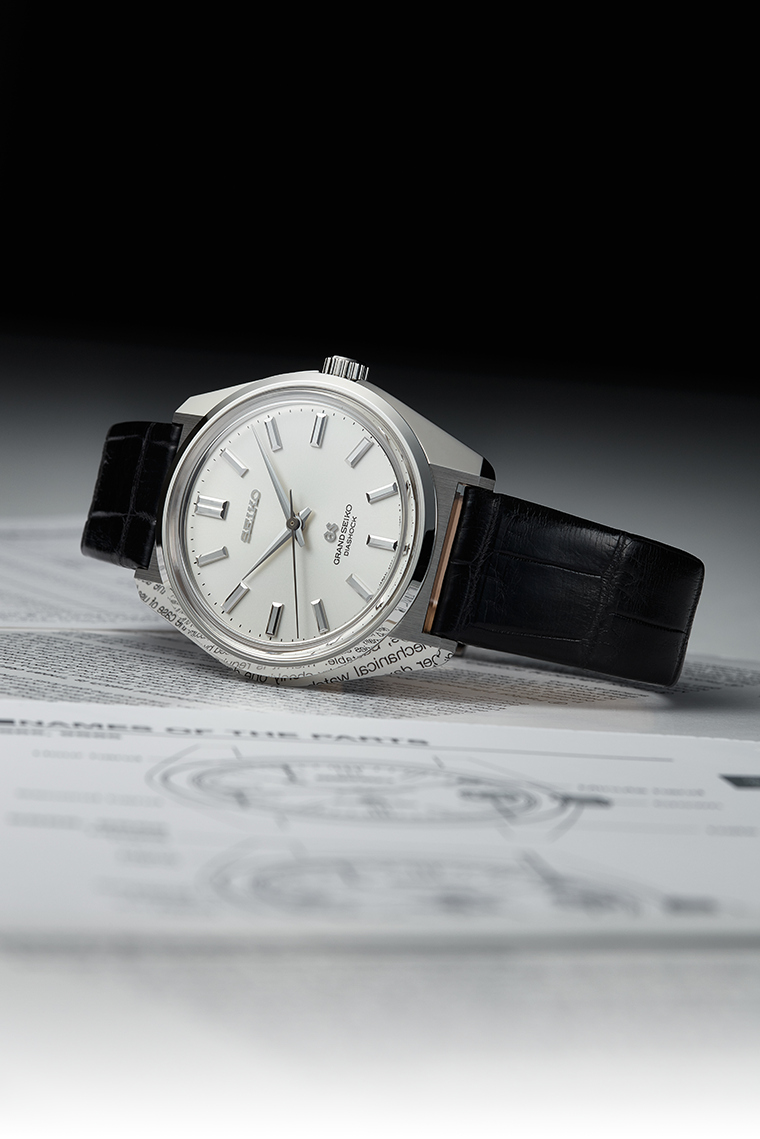
The 44GS, the masterpiece that first embodied the Grand Seiko Style in 1967, was revived in 2013 as a limited edition, SBGW047. The crystal, case thickness and other details were updated but the characteristic case design with its straight lines, planes, and two-dimensional curved surfaces, was faithfully reproduced. The distortion-free, highly polished case surface is truly mirror-like in its reflection.
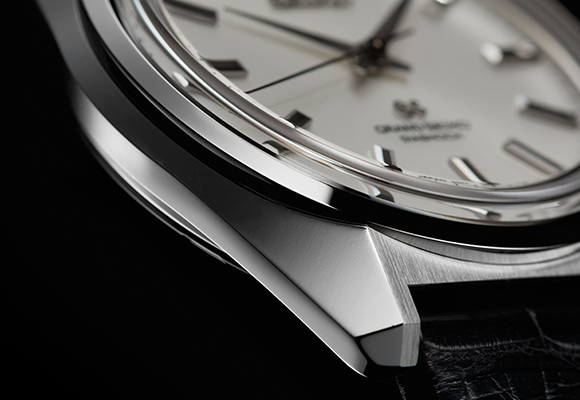
The exquisite distortion-free, polished surfaces of the bezel and case are the product of Zaratsu polishing, an art mastered only by the most highly skilled craftsmen. The inward slanting case side is a particularly challenging surface for this technique. (Model in the photo is SBGW047)
The exquisite distortion-free, polished surfaces of the bezel and case are the product of Zaratsu polishing, an art mastered only by the most highly skilled craftsmen. The inward slanting case side is a particularly challenging surface for this technique. (Model in the photo is SBGW047)
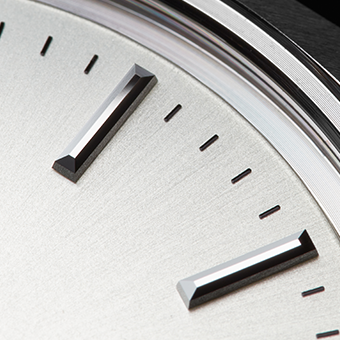
The polished finish gives the multifaceted hour markers a brilliant sparkle, but an attractive shadow is cast on the other side.
(Model in the photo is SBGH219)
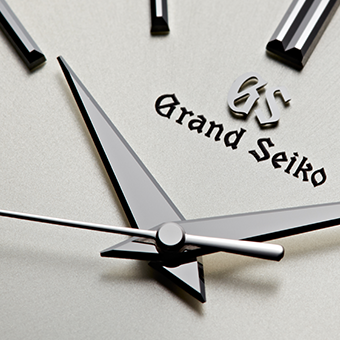
The sides of the hour and minute hands are cut diagonally and then polished to a brilliant finish. This precision is evident on every surface, right to the very tip of each hand.
(Model in the photo is SBGH219)
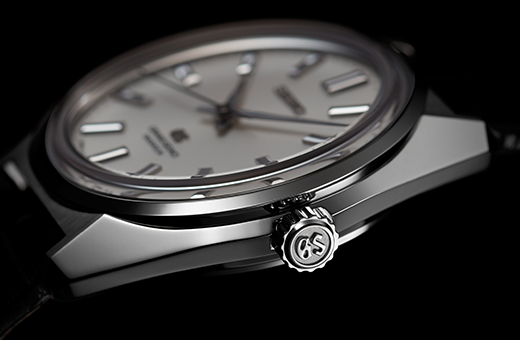
The thickness of the case is 11.5mm, but it looks thinner due to its inward slant. The glass is a sapphire crystal, but in keeping with the original 44GS, it is box shaped.
(Model in the photo is SBGW047)
